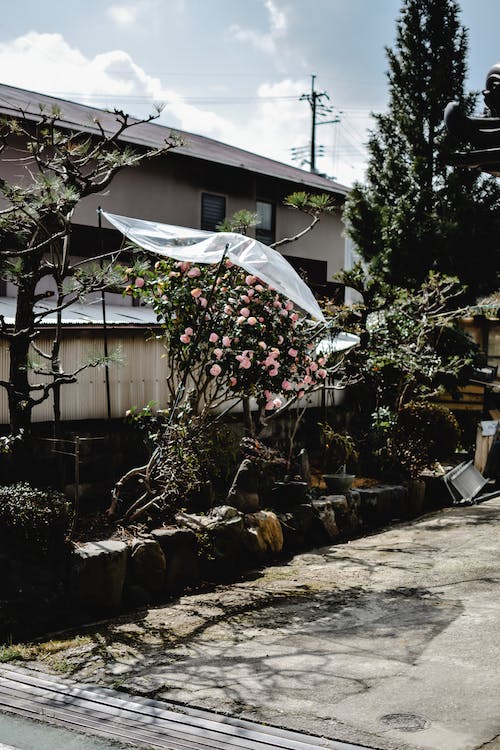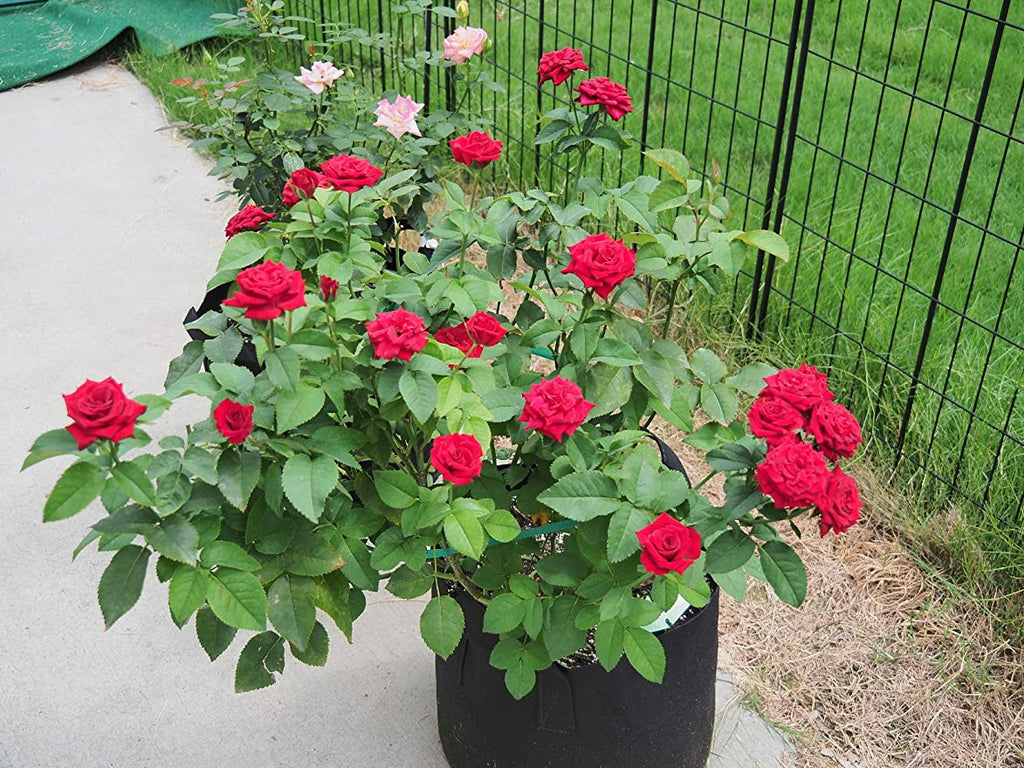
We’ve written a good many blogs over the last year, and while we’re always happy to share information with you we’ll admit we’re still learning ourselves. This year, we decided to venture into something that was new to us and yet a classic garden feature: roses. These lovely flowers come in a huge variety of colors, sizes, and climate/soil needs, and while they’re a common feature in many gardens there’s a lot to know about them. So, join us as we dig in and do our best to de-mystify these amazing flowers via our beginners’ guide to roses!
What are Roses?
This sounds like an obvious question with an easy answer—everyone knows what roses are—but there’s quite a bit of history and culture that goes into this. Roses are plants of the Rosaceae (“Rose-like”) family and the genus Rosa. The botanist tell us that what we refer to as roses are a collection of hundreds of species of plants, with tens of thousands of individual cultivars and varietals. This makes it difficult to generalize about roses as a garden plant—but it also means that there’s almost certainly a few species or varieties that are right for your garden!
While roses are found in the wild around the world, and have been since prehistoric times, the garden plants we know as roses get their start in ancient Persia; the name “rose” has its distant roots in the Old Persian word wurdi. The varieties of roses most popular in Europe and the Americas originate in 18th century China, adding another layer of history to the long journey this plant has had to our contemporary gardens.

Growing Roses at Home
With their long history and many varietals, there’s a lot of myth, mystery, and lore built up around growing roses at home. A quick trip to your local garden club may confirm this—just listen to the longtime members talk about what they do to keep their roses looking their best! And while some of that esoterica might be good for folks growing roses professionally or competitively, for home gardeners who just want to enjoy the beauty and variety these flowers off it’s mostly not necessary.
So what do roses need to thrive? As it turns out they like the same conditions as many other garden plants. Well-drained, fertile soil, at least six hours of sun every day (with perhaps some shade in hot climates), and at least an inch/2.5cm of water a week. Speaking of watering—roses can be prone to powdery mildew and other fungal disease if their foliage and flowers are too wet, so watering the soil directly is probably the best approach once leaves start to appear.

Fertilizing roses is the subject of much debate, but in general it’s best to apply a balanced fertilizers—many are made just for roses—and to gently turn it into the surface of the soil around the base of the plant in springtime. Make sure to follow the manufacturer's instructions for best results. Well-rotted manure or rich compost are also good choices, again applied in spring.
Planting Roses
Very rarely do gardeners start roses from seeds—most roses are purchased from nurseries or garden stores as either a container plant or as a bare-root starter. Bare-root roses will arrive wrapped in plastic, looking rather like a bundle of dead stems and roots. Never fear, however, they’re just dormant and will wake up once the roots have been given a good overnight soaking in a container of water. Once transplanted into the soil, bare-root roses will need to be kept wet until they get established, so water frequently.
Transplanting your new roses into your garden is fairly straightforward: select a site that meets their needs, bearing in mind that different varietals and species may have different preferences, and dig a hole large enough to fit the plant’s roots and then some. A good potting mix amended with peat moss works well to amend the soil that you’ll fill in around the bottom and sides of your roses as you put them in place; generally speaking the crown for the plant should be at ground level in warmer clients and 2-3 inches/5-8cm lower in cooler climates. Fill the hole around the plant, stir in the fertilizer of choice, and water thoroughly. As with most transplants, frequent watering may help to avoid transplant shock as the roses get established in their new home.

The best times to transplant roses are in early spring or late fall, when the temperatures are cooler but not cold and the soil is still warm. Try to plant either after the last frost of the year, or at least six weeks before the first frost of autumn/winter.
Growing Roses in Containers
We know that many of you are patio or container gardeners, so we’re happy to report that not only is it possible to grow roses in containers, but that some varietals of roses have been bred to thrive in a container garden. Rose varietals marked as “ground cover”, “miniature”, or “patio” roses do the best in containers. While you should follow the guidelines for the varietal you choose, in general container roses like the same conditions, soil, and treatment as their in-ground counterparts. Large, well-draining containers are preferred, so bear that in mind!

A Rose by Any Other Name . . .
There’s a lot more to say about roses, and we’re still learning ourselves, so there will be future blogs on the topic. If you have any advice we’d love to hear from you—experienced gardeners sharing information is just the kind of community building we love here at Gardzen!

Leave a comment